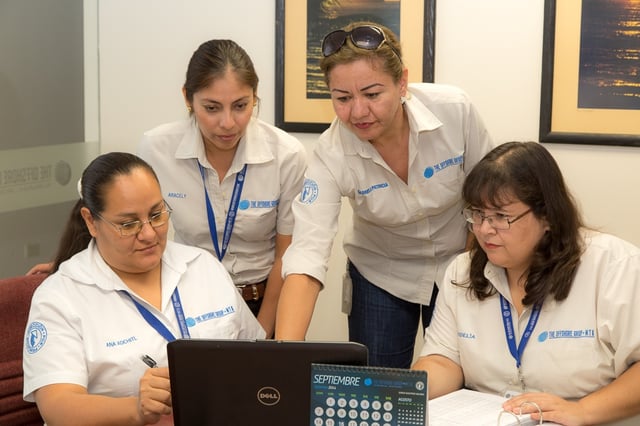In late July, U.S. congress decided to remove plans for a Border Adjustment Tax (BAT) from the discussed trade reform and NAFTA negotiations. The BAT would have taxed imports to the U.S. from foreign countries. The notion of the tax brought about many uncertainties regarding market and economic value, specifically the automotive and retail industry. This news to remove the inclusion of a BAT comes in the middle of trade negotiations between the three countries.
Rise in Mexico’s GDP and FDI
So far, 2017 has shown economic growth in Mexico with a .6 percent increase in June from the beginning of the year; market estimates for June suggested a .2 percent growth according to the Financial Times. Gross domestic product has expanded 1.8 percent on a year-on-year basis in accordance with market expectations. The Times suggests that the attempted “pragmatic and conciliatory” approach to renegotiating NAFTA is a factor in the growth forecasts for Mexico.
Business and market experts have begun to urge for a targeted way of approaching the negotiations to provide benefits for all three countries. Specifically, border economies are pushing for the least amount of change to their production, trade, and business networks which have provided over a million jobs for the U.S. region. In 2016, $127 billion USD worth of goods and services was exported to Mexico from the border states, according to the San Diego Tribune. Although the border region hopes for a small changes in trade, it can benefit from an updated version of an agreement to better the production process, cross-border infrastructure, and increase trade efficiencies.
The pressure on Foreign companies investing in Mexico has also been lifted along with the 20% tax on goods going into the U.S. Orlando Murrieta, U.S. Customs Support Manager for the Offshore Group, noted on how the seemingly high tax rate contributed to decisions companies made about keeping operations in Mexico, as well as moving production nearshore. Forgetting about the BAT puts companies in a better place to forecast their budgets and enables manufacturers to establish a better idea of what to expect financially.
What About Current NAFTA Negotiations?
North American countries can now look at ways to work towards trade updates and modifications. The decision also reinforces the U.S.’s commitment to trade across North America and will hopefully improve trade relations. The Offshore Group’s Director of Import / Export, Pedro Valenzuela commented on what would need to happen to boost the North American economy. “The current negotiations taking place should focus on updating the agreement such that it includes e-commerce, energy, and updated rules of origin.” The decision to table BAT provides a sense of optimism for the negotiations going forward. The effect free trade has had on the U.S., Mexico, and Canada has made North America internationally competitive.

The Future of Industry in Mexico
Manufacturing industries in Mexico benefit from Mexico’s supply chain network, specifically those with highly technical production processes. BAT might have had a negative effect on consumer costs in the U.S., specifically for the automotive industry, which is one of the biggest manufacturing industries in the country. Although the coast is clear from taxes on the auto industry, it doesn’t mean that other regulations won’t be put in place. Murrieta states, “Many believe that the rules of origin for the auto industry will be slightly modified to increase the regional value or primarily North American content, which is currently 50% - 60%. I see this working in the U.S.’s favor only if tariffs are increased for goods and components, otherwise companies may opt to import from outside of North America.” An increase in the percentage of the rules of origin would be beneficial for many automotive OEMs that have established manufacturing economies of scale with robust supply chain networks. These networks support advancements in other sectors of Mexico’s manufacturing industry, specifically aerospace and electronics.
Many in Mexico want to focus on the importance of reinforcing the success NAFTA has had in North America, and hope to implement a more constructive look towards negotiating the deal. NAFTA provides tremendous backing to the economic growth of the the three countries, and allows for commercial advancement and production efficiency that starts at the border and ends in a holistic support of the North American economy.
Subscribe
Sign up and stay informed with tips, updates, and best practices for manufacturing in Mexico.






